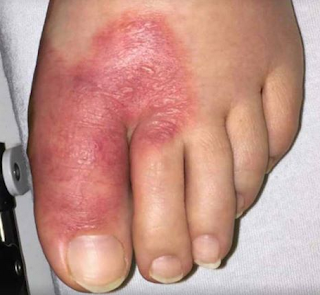This week Mr Frazer Donaldson gives us the lowdown on an all too common problem, piriformis dysfunction.
Frazer's primary interests within Foot Medic is biomechanics and sports injury. His passion for both functional anatomy and problem solving make him an outstanding sports podiatrist.
Read on to find out what exactly the condition is and how you can prevent and treat it.
So basically it is an important muscle in how your hip moves when you walk and move!
In terms of activity, ie; Running, the piriformis plays an important role in the various rotations of the hip and can commonly be injured or through weakness/tightness to the area cause knock on effects elsewhere ie over pronation due to a poor ability to externally rotate at late stance phase (weakness) or supination of the foot through stance phase as thee leg is too externally rotated (tightness).
As the muscle runs adjacent to the sciatic nerve the symptoms often include:
- Shooting pain/electric shock
- Some numbness/tingling sensation
- Dull ache across the mid portion of the glutes during or after exercise.
- ‘Trendelenburg gait’ whereby during walking there is minimal support to the opposing swinging leg causing instability. Julia Roberts has it don’t feel bad!
- Over pronation of your foot or flat footed-ness (weakness)
- Supination of the foot (tightness)
Symptoms can be due to tightness or weakness of the muscle or poor stretching before and/or after exercise.
You’re local Podiatrist should be able to assess weakness and tightness, however if these symptoms compute to your own it is important to stretch and strengthen the muscle. RICE therapy (rest, ice, compression and elevate) should be applied post exercise or when most painful) As well as this ask to be assessed for other foot conditions and review footwear and orthotic options.
STRETCHING
Sit on a normal chair and cross your left foot on to your right knee, then slowly lean forward, with a straight back, and hold for up to 60 seconds. Complete stretch daily on each side, repeat more frequently pre and post exercise.
INCREASE TONE & STRENGTH
Lie on your side, bend your knees and put your feet together. Keeping your feet in contact, lift your knee, as shown above as high as you can very slowly and hold at the peak for 3 seconds then bring your knees into contact again. Repeat 15 times on each side daily. It is important to maintain strength in the muscle even if there is no weakness especially athletes or runners.
For more information on foot conditions why not try out our fantastic, free new web application by clicking HERE!











